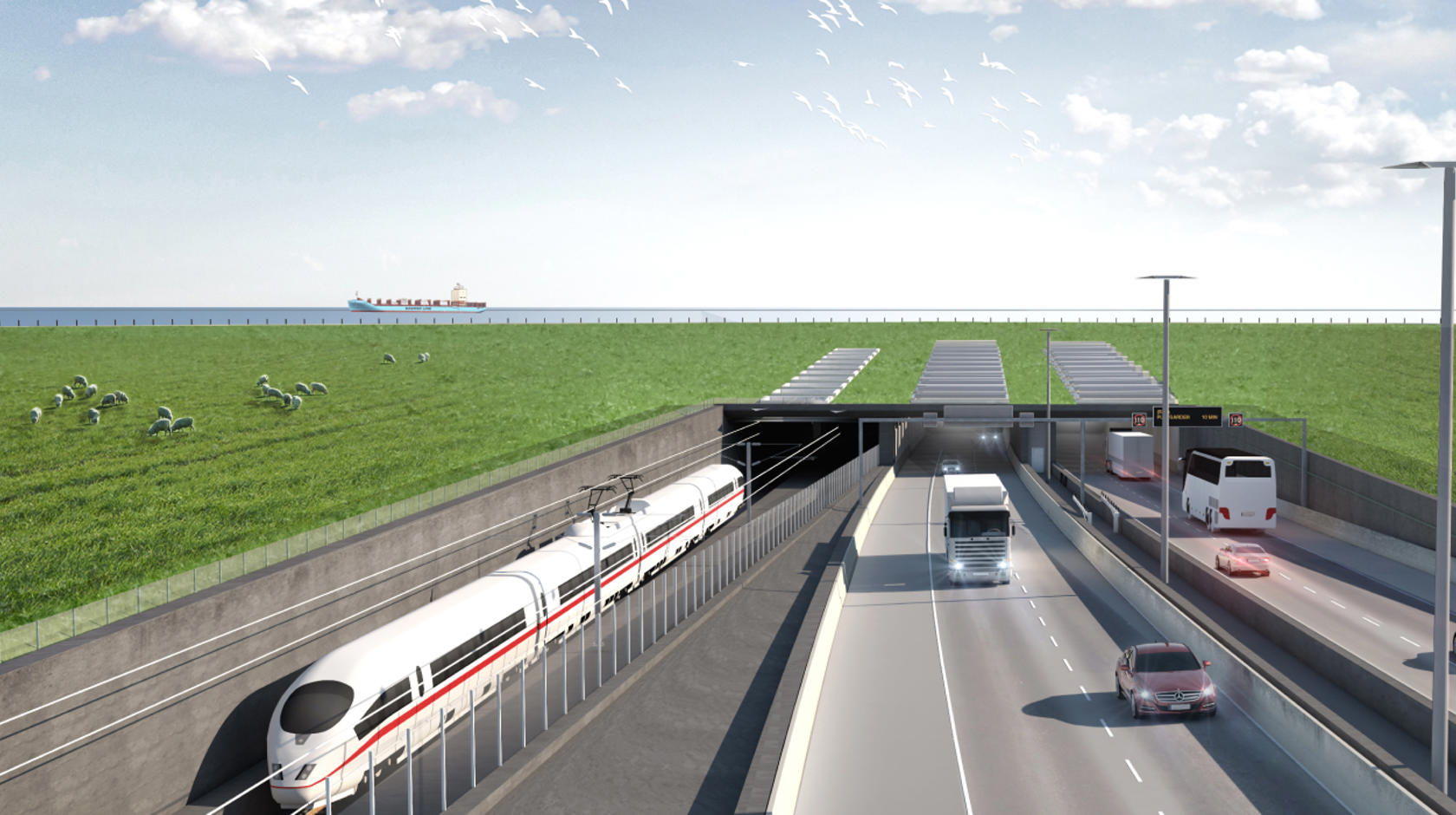1. Site preparation
The construction sites at Rødbyhavn on Lolland and Puttgarden on the island of Fehmarn were thoroughly prepared in the years prior to the construction phase. This particularly applies to the large construction site on the Danish side.
New channels and access roads have been constructed, utility connections installed and a number of existing buildings at the construction site have been demolished. New water holes and amphibian fences have also been established around the construction site.
2. Construction of work harbours at Rødbyhavn and Puttgarden
Work harbours are under construction at Puttgarden on Fehmarn and at Rødbyhavn on Lolland. Building materials needed for the construction project are sailed out from here, which means that areas in the vicinity of the construction will be protected from vehicles carrying heavy loads.
The work harbour at Rødbyhavn will be by far the largest of the two as this is where production of the tunnel elements takes place. The harbour will also be used for towing the finished tunnel elements into the Fehmarnbelt.
The Danish work harbor was commissioned in July 2022, and the German one exactly one year later.
3. Dredging in the Fehmarnbelt and establishment of new land areas
An 18 km long trench from Denmark to Germany was dredged to accommodate the tunnel elements. The tunnel elements will be immersed into the trench, joined together and covered with gravel, sand and stone. The surplus material from the dredging is used to construct new coastal areas near Rødbyhavn and to a limited extent on Fehmarn.
Work on dredging the tunnel trench began in 2021 and was completed in 2024.
4. Construction of tunnel factory at Rødbyhavn and the 'tunnel village'
A factory was built east of Rødbyhavn for the manufacture of the 89 concrete elements from which the tunnel will be constructed. The factory accommodate six production lines – five for the tunnel’s standard elements and one for the special elements. Accommodation for the around 1,300 tunnel workers – a 'tunnel village' - was also being built and provides a good standard of accommodation and catering facilities as well as social activities.
The tunnel village was completed in 2023. The first tunnel segment was cast in 2023.
5. Portal facilities
Portal buildings are constructed around the descent into the tunnel on the Danish and German sides. The portal facilities will connect the tunnel railway and motorway with the upgraded and partly newly built roads and railways in the hinterland. The portal will contain a light grid in the tunnel roof to ensure a smooth transition between the natural light and the light in the tunnel.
Work on the portal buildings on the Danish and German sides began in 2022. On both the Danish and German sides, the front section of the tunnel portal has been under water since 2024. This is where the immersed elements will be connected.
6. Production and assembly of tunnel elements
The tunnel elements are produced at the factory in Rødbyhavn and will be towed out to the Fehmarnbelt on an ongoing basis. The contractors will immerse the elements one by one and assemble them from the coast and out towards the middle of the Fehmarnbelt from the Danish and the German side.
8. Testing and opening
All installations in the tunnel will be thoroughly tested prior to the opening. Safety and contingency procedures will also be tested and approved by the authorities before the Fehmarnbelt tunnel opens to traffic.








